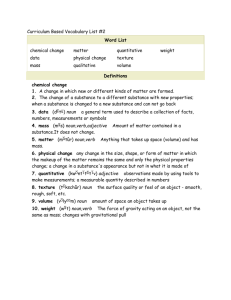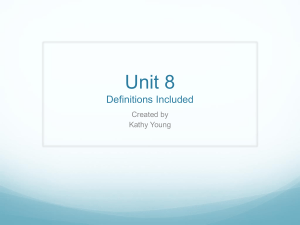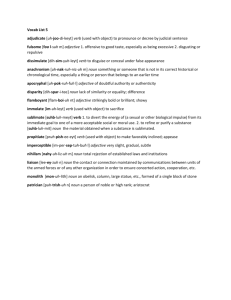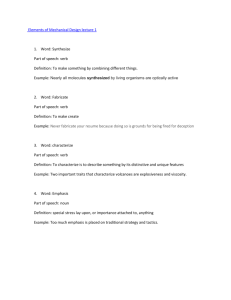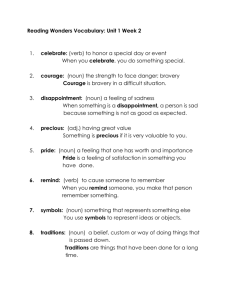Grammar and Punctuation Terms
advertisement
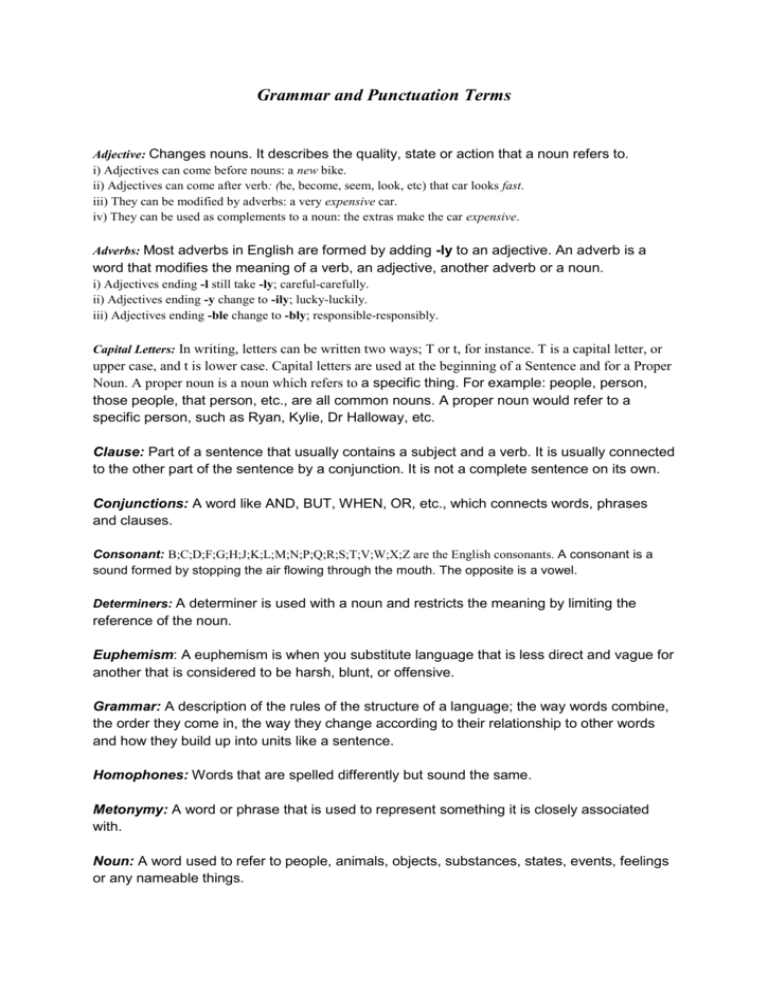
Grammar and Punctuation Terms Adjective: Changes nouns. It describes the quality, state or action that a noun refers to. i) Adjectives can come before nouns: a new bike. ii) Adjectives can come after verb: (be, become, seem, look, etc) that car looks fast. iii) They can be modified by adverbs: a very expensive car. iv) They can be used as complements to a noun: the extras make the car expensive. Adverbs: Most adverbs in English are formed by adding -ly to an adjective. An adverb is a word that modifies the meaning of a verb, an adjective, another adverb or a noun. i) Adjectives ending -l still take -ly; careful-carefully. ii) Adjectives ending -y change to -ily; lucky-luckily. iii) Adjectives ending -ble change to -bly; responsible-responsibly. Capital Letters: In writing, letters can be written two ways; T or t, for instance. T is a capital letter, or upper case, and t is lower case. Capital letters are used at the beginning of a Sentence and for a Proper Noun. A proper noun is a noun which refers to a specific thing. For example: people, person, those people, that person, etc., are all common nouns. A proper noun would refer to a specific person, such as Ryan, Kylie, Dr Halloway, etc. Clause: Part of a sentence that usually contains a subject and a verb. It is usually connected to the other part of the sentence by a conjunction. It is not a complete sentence on its own. Conjunctions: A word like AND, BUT, WHEN, OR, etc., which connects words, phrases and clauses. Consonant: B;C;D;F;G;H;J;K;L;M;N;P;Q;R;S;T;V;W;X;Z are the English consonants. A consonant is a sound formed by stopping the air flowing through the mouth. The opposite is a vowel. Determiners: A determiner is used with a noun and restricts the meaning by limiting the reference of the noun. Euphemism: A euphemism is when you substitute language that is less direct and vague for another that is considered to be harsh, blunt, or offensive. Grammar: A description of the rules of the structure of a language; the way words combine, the order they come in, the way they change according to their relationship to other words and how they build up into units like a sentence. Homophones: Words that are spelled differently but sound the same. Metonymy: A word or phrase that is used to represent something it is closely associated with. Noun: A word used to refer to people, animals, objects, substances, states, events, feelings or any nameable things. Onomatopoeia: A word which imitates the sound it represents, such as bang, whoosh or crack. Oxymoron: Combining two terms that are normally contradictory. Palindrome: A word or phrase that is spelled the same way forwards or backwards. Phrase: A group of words that go together, but do not make a complete sentence. Prefixes: Groups of letters that can be placed before a word to modify its meaning. Pronoun: A word that substitutes a noun or noun phrase with a generalising term (e.g. it, these, that, those, each, you, her etc.). Punctuation: The symbols used in written language to indicate the end of or the type of a sentence or a clause. Sentence: A group of words beginning with a capital letter and ending with a full-stop, exclamation or question mark in written language, containing a verb. Tense: Used to show the relation between the action or state described by the verb and the time, which is reflected in the form of the verb. Verb: One of the major grammatical groups, and all sentences must contain one. Verbs refer to an action or a state. Vowel: A;E;I;O;U are the English vowels. A vowel is a sound made by pushing air out through the mouth. Y is sometimes used as a vowel. The opposite is a consonant. Zeugma: A word used to link two words or phrases.


